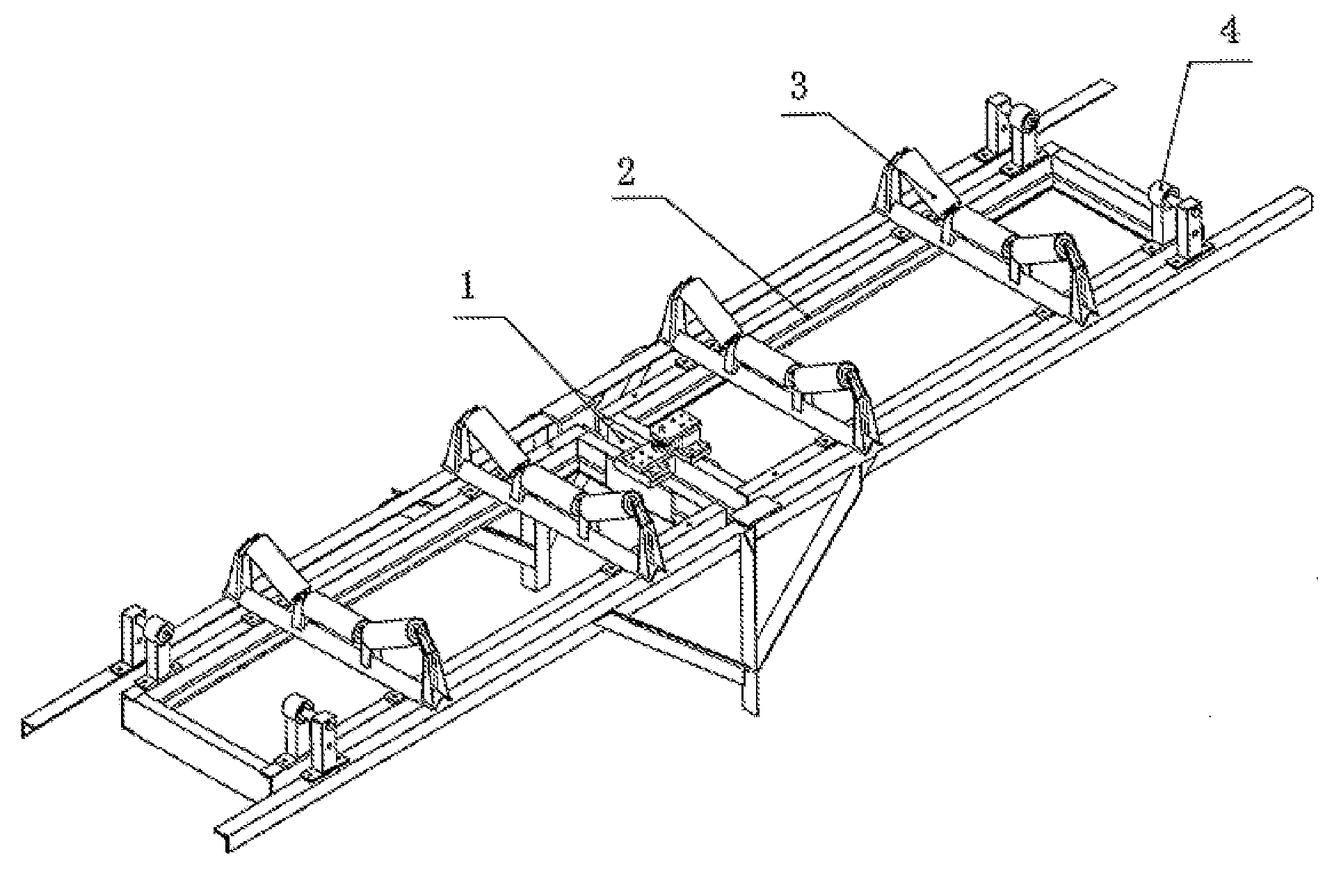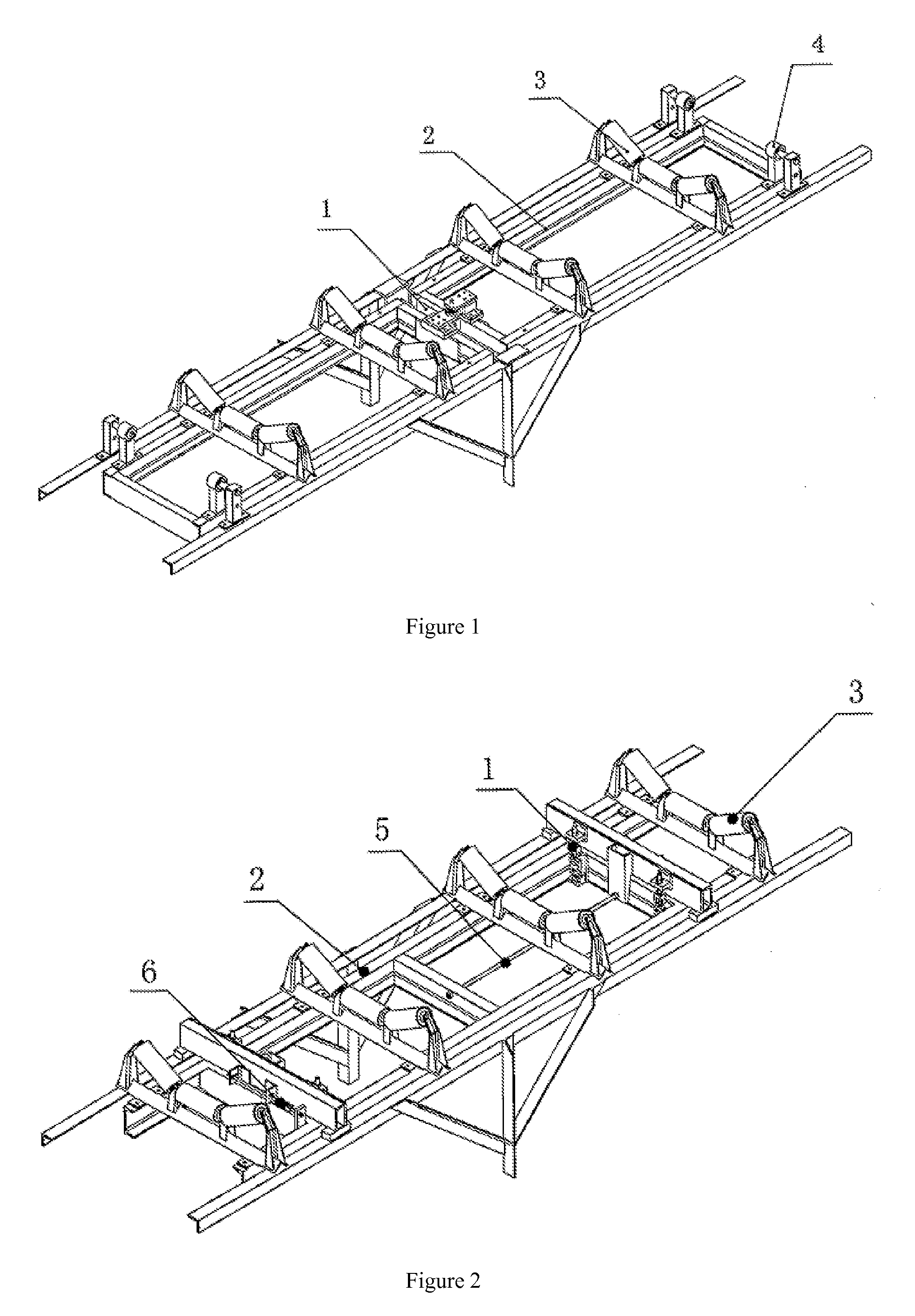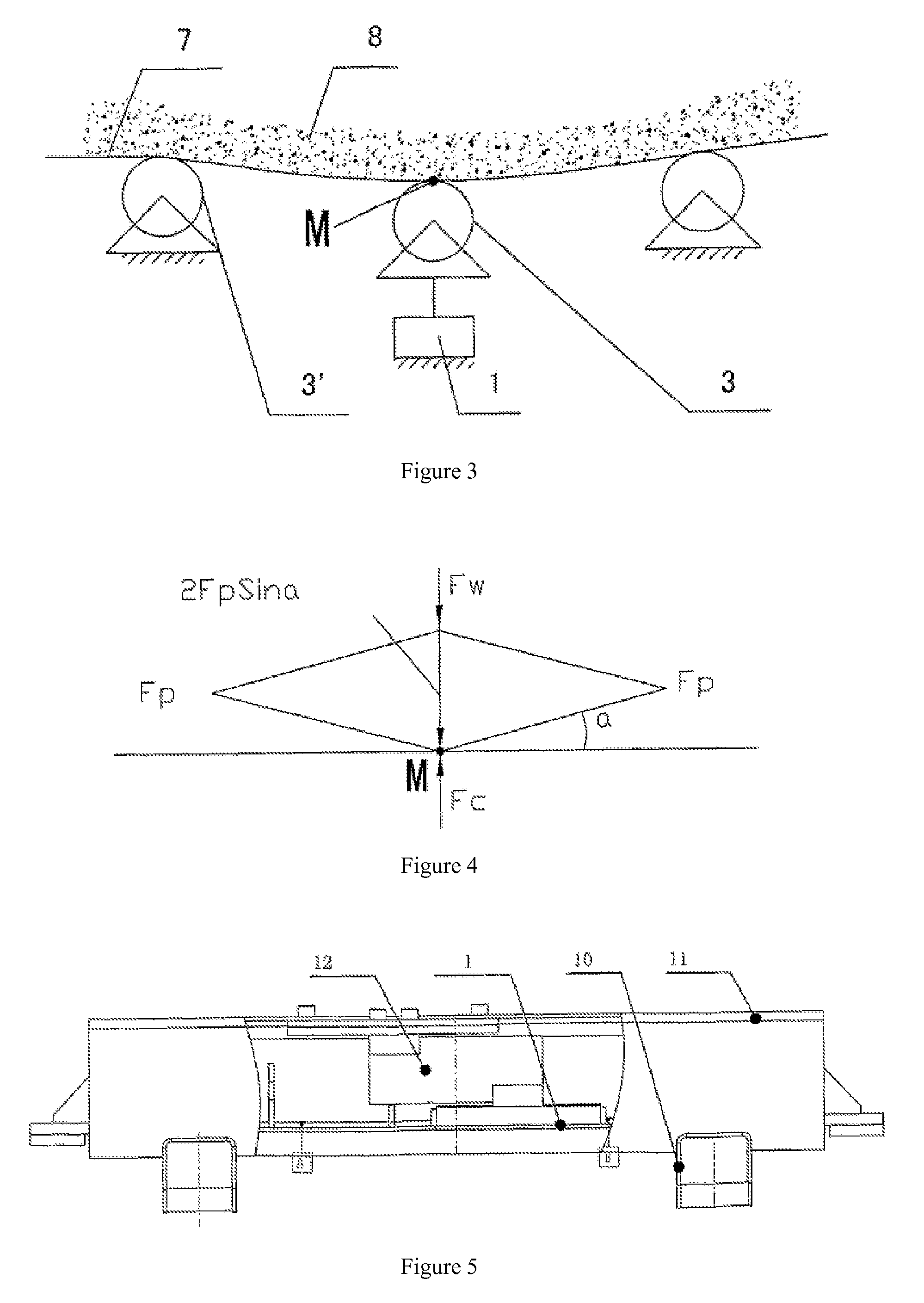High Precision Belt Weighing Array System for Dispersed Material
a belt and array technology, applied in the field of belt weighing arrays, can solve the problems of multiple support point load cells in the platform that will inevitably interfere with one another, and the problem of long-term reliability is always a major problem
- Summary
- Abstract
- Description
- Claims
- Application Information
AI Technical Summary
Benefits of technology
Problems solved by technology
Method used
Image
Examples
Embodiment Construction
[0055]Referring to FIGS. 5 and 6 there is shown a weighing unit in accordance with a preferred embodiment of the present invention. The weighing unit includes a load cell 12, a weighing frame including a weight-bearing beam 11, roller brackets 10 and weighing rollers 3. In the embodiment shown there are two roller brackets 10, on either side of the load cell and approximately parallel to each other, which use support portions to support the three-part, V-shape weighing roller assemblies 3, disposed at both roller bracket or weighing frame ends respectively. Weight bearing beam 11 in the preferred embodiment shown uses steel sheet that bent in a channel shape, which has a higher bending resisting modulus with relatively light weight than a solid beam. Thus the weight-bearing beam is resistant to sinking under weight, despite its light structure. The channel shape weight-bearing beam has two indentations adjacent to each end that correspond with roller bracket 10. Mid sections of the ...
PUM
 Login to View More
Login to View More Abstract
Description
Claims
Application Information
 Login to View More
Login to View More - R&D
- Intellectual Property
- Life Sciences
- Materials
- Tech Scout
- Unparalleled Data Quality
- Higher Quality Content
- 60% Fewer Hallucinations
Browse by: Latest US Patents, China's latest patents, Technical Efficacy Thesaurus, Application Domain, Technology Topic, Popular Technical Reports.
© 2025 PatSnap. All rights reserved.Legal|Privacy policy|Modern Slavery Act Transparency Statement|Sitemap|About US| Contact US: help@patsnap.com



